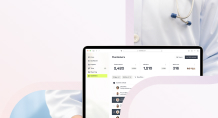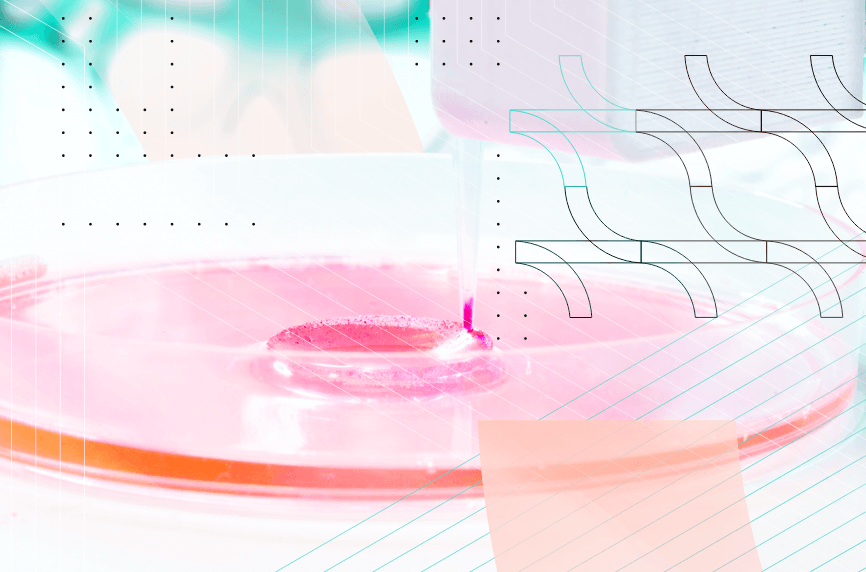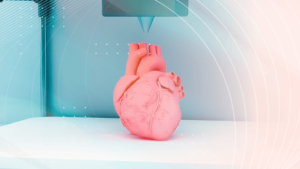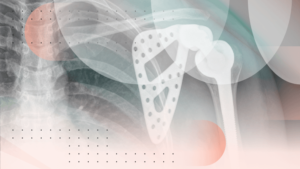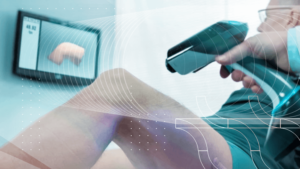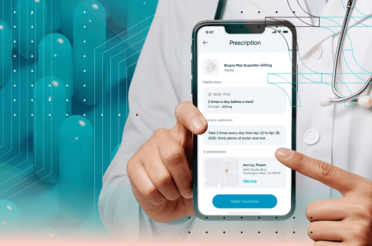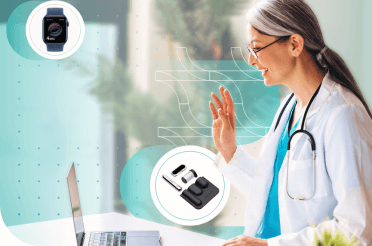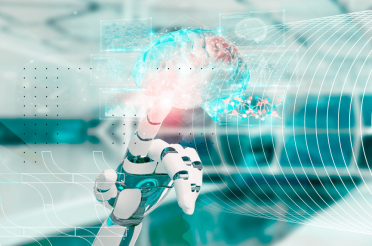The invention of 3D printing technology in the 1980s has since transformed and affected many industries such as housing and space research. Of course, medicine makes no exception.
The expanding relevance of 3D printing in personalized medicine has become apparent in recent years, with uses ranging from creating medical equipment and prostheses to producing replacement organs.
In order to fully understand the revolutionary effects of 3D printing in medicine, this article will examine its applications in pharmaceutical research, bioprinting, surgical procedures, and personalized medical devices. It will also take a look at upcoming developments, difficulties, and how 3D printing might change the medical industry.
Introduction to 3D printing in medicine
The field of additive manufacturing, or 3D printing, has transformed many sectors of the economy, including the medical field. A digital model or file now allows us to create complex and personalized 3D objects, such as implants, detailed anatomical models, organs, and tissue printings. This creates new and previously unimaginable opportunities for healthcare.
In a medical setting, 3D printing technologies layer materials to construct implants, medical equipment, or even biological tissues. These creations are customized to meet the specific needs of individual patients.
What sets 3D printing apart from traditional manufacturing is its ability to produce highly detailed, patient-specific products directly from medical imaging data. Surgeons and medical professionals can now improve the precision and effectiveness of medical procedures by using models made from CT or MRI scans to create patient-specific solutions.
The wide range of applications for 3D printing is enhancing patient outcomes, reducing costs, and expanding access to treatment. This technology can significantly change patient safety because it can tailor medical devices and arrange surgeries.
So how does medical 3D printing work?
- Scanning methods like MRI, CT, or 3D ultrasound first digitize the patient’s anatomy and structures to produce a patient-specific 3D print.
- Sophisticated software like Simpleware speeds up the typically time-consuming process of segmenting images to identify regions of interest and create a 3D design and model.
- After that, the model is transformed into surface meshes, equipped with the required connectors and surface colors for 3D printing.
- It is then exported as STL files so that the printer may layer materials to create devices.
This technique improves medical analysis and therapy by enabling personalized and detailed prints.
Benefits of 3D printing in healthcare
Before we go any further, it’s essential to point out briefly which are one of the key advantages of incorporating 3D printing in the field of medicine.
Here are the most important among them:
- Personalized patient care: 3D printing reduces complications and recovery times by developing customized medical devices and solutions based on patient-specific information from MRI and CT scans. This leads to better treatment outcomes.
- On-demand manufacturing: Being able to quickly produce medical equipment like prosthetics, implants, and surgical tools on-demand reduces the need for large inventories and shortens patient wait times. This is especially beneficial in emergency situations.
- Cost-effectiveness and sustainability: 3D printing produces lighter, stronger medical parts at a lower cost and with less environmental impact than traditional production. It also requires fewer materials and manual labor.
- Improved training and surgical preparation: 3D-printed anatomical models enable lifelike simulations for surgical practice and testing new medical devices. This allows for faster adaptation and advancement of medical procedures and technologies.
3D printing offers numerous benefits in healthcare, from personalized treatments to faster, on-demand production of medical devices. This technology has the potential to improve health care delivery in a number of ways, including accessibility, efficiency, and patient-centeredness. There is no doubt that it also has a huge impact on medical practices.
The impact of 3D printing on medical practices
By increasing surgical precision, cutting down on treatment times, and boosting patient safety, 3D printing is radically changing the medical industry.
Surgeons can now print precise anatomical models of each patient’s unique anatomy, for example, which helps them plan and practice procedures more accurately. This has shown to be especially helpful in complex procedures involving organs like the heart or brain, where even a small mistake might have catastrophic results.
The ability to print devices with complex geometries tailored to individual patients has greatly advanced the development of medical products. This level of customization would have been difficult with traditional manufacturing. Now, medical practitioners can use digital blueprints to print surgical instruments specifically designed for each patient, improving the success rate of surgery planning and execution.
Researchers also create a set of microneedles for effective diabetes monitoring.. With the goal of creating a solution that is more user-friendly, the Austrian Institute of Technology (AIT) collaborated with DirectSens and In-Vision to initiate the NUMBAT research project. With the use of high-resolution DLP 3D printing, NUMBAT seeks to develop a range of polymeric microneedles for continuous glucose monitoring (CGM) that is less invasive and uncomfortable. (1)
Moreover, hospitals and medical device manufacturers of medical devices are using 3D printing to provide personal protective equipment (PPE) and other necessary medical supplies during shortages, like the COVID-19 epidemic.
Point-of-care manufacturing has shown potential in reducing supply chain bottlenecks and providing healthcare organizations with a quick prototype alternative that drastically shortens production times.
3D printing applications in medical procedures
3D printing has been widely adopted across the medical field due to its ability to create highly customized, patient-specific medical models and products.
The manufacturing of prostheses, dental equipment, hearing aids, and spinal and orthopedic implants is among its most important uses. These products are customized to meet each patient’s unique demands, enhancing both usability and comfort.
For instance, more integration with the patient’s anatomy and shorter recuperation times are provided by 3D-printed dental crowns and bridges and specially made orthopedic implants.
Moreover, 3D printing is transforming drug formulation and administration methods. Patches, inhalers, and customized medicine dosages are just a few of the tools being produced to improve patient clinical care.
Let’s take a closer look at some of these applications.
Implants
The manufacturing of medical implants has been revolutionized by the capacity to accurately tailor hip, dental, and spinal implants based on the unique anatomy of each patient. Before the invention of 3D printing, implants were mass-produced in standard sizes. Today, though, each implant can be customized exactly for the patient.
This shortens operating times, lowers surgical problems, and eliminates the need for invasive operations like bone grafts. The implant advantages result in quicker healing periods and greater success rates for operations like spine and joint or knee replacements.
Some other specific examples of incorporating both 3D printing and implant in patient care and medicine is a replacement of a skull. In 2014, Dutch surgeons successfully replaced the skull of a 22-year-old woman suffering from a rare condition causing excess bone growth, which was compressing her brain. It would have been fatal if there had been no therapy made on time. (2)
In order to produce complex biomedical implants, engineers at RMIT University in Australia invented a unique 3D printing method that uses PVA glue and common printers. The utilization of commercially available medical-grade materials is made possible by this “reverse” printing technique, creating exciting new opportunities for potential medical applications. (2)
Prosthetics
Personalized prosthetics are another example of one of the most innovative applications of 3D printing in medicine. Traditional prosthetics are costly, time-consuming to make, and frequently need intrusive, regular revisions. On the other hand, 3D-printed prosthetics are more precisely customized to fit the patient’s body, resulting in increased comfort and functionality.
They can also be made more cheaply and swiftly, which is very helpful for kids who outgrow their prosthetics so often. Patients can also add different colors and designs to their prosthesis, personalizing the experience and making it less of a clinical setting.
Over 30 million individuals worldwide depend on prosthetics and not their own limbs for mobility, but 80% of amputees do not have access to contemporary alternatives. (2) Because alterations may destroy the original molds, the traditional prosthesis fabrication process is inefficient and slow.
Organizations like Not Impossible and Refugee Open Ware use 3D printing to provide aid to those in need, especially refugees from conflict areas. Due to the prolonged conflict, many people in Sudan were left with amputations until Not Impossible delivered 3D printers to the country in 2013. (2)
Scientists have recently used 3D printing to produce tissue-mimicking materials customized for each patient. They created two types of dual-material 3D printed meta-materials to replicate the characteristics of soft tissue constructs.
The research demonstrated the significant potential for creating patient-specific tissues using these 3D printed materials. One major benefit is the ability to achieve accurate mechanical properties, which can vary based on factors like age, gender, ethnicity, and other physiological or pathological traits.
Anatomical models
3D printing plays a vital role in medical education and surgical planning by producing anatomical models. Surgeons use these models, created from the patient’s medical imaging data, to rehearse complex procedures before entering the operating room. This enhances precision and reduces the risk of potential complications.
Advanced techniques like PolyJet printing create full-color, highly accurate anatomical reproductions with realistic textures and visuals. These models help surgeons and medical students improve their skills and prepare for surgery. When high-quality CT scan data is available, 3D-printed models achieve anatomical precision. However, their rigidity can make them difficult to use in soft tissue applications, such as with the brain.
For example, a group of scientists developed a fast and cost-effective method to create realistic, physiologically accurate, and flexible human brain models by combining 3D printing, molding, and casting. They used a gelatin-like material that mimics the mechanical properties of the human brain. They concluded that this approach could be used to create customized, deformable brain models for medical education or surgical planning.
Organ and Tissue Printing
The growing field of bioprinting tissues within 3D printing has the potential to revolutionize organ transplantation. Researchers are using 3D printing to create tissue scaffolds, a technique that could eventually allow the printing of fully functional organs, such as kidneys or livers, for transplantation.
While this technology is still evolving and not yet widely used, ongoing research is bringing us closer to using 3D-printed organs to save lives and address the organ shortage.
The ability to produce organs with the same complexity as natural ones opens the future possibility of enhancing existing organs or creating entirely new ones for specific purposes. Pushing beyond current advancements, a global team of evolutionary biologists has developed a 3D morpho-space to explain not only animal and cell structures, including invertebrates, but also biological structures found in human organs. (3)
The three axes of the design space are developmental complexity, solid/liquid complexity, and cognitive complexity. They point out that a significant portion of the design space is empty, and that bioprinting methods open up this area for investigation into basic concerns of evolution as well as completely novel biological structures.
Here are the latest advancements in tissue printing:
- Blood vessels: Researchers at Harvard University used a custom-designed 3D printer with dissolvable ink to create tissue swatches containing skin cells and structural components that could eventually function as blood vessels. These artificial blood vessels aim to distribute growth hormones, nutrients, and fluids evenly throughout the tissue. Building on this work, Korean researchers successfully implanted 3D-printed blood vessels in a rat, creating functional artificial blood vessels to treat cardiovascular diseases.
- Bones: Washington State University professor Susmita Bose used a 3D printer to combine substances with ceramic powder. This process creates scaffolds that promote bone growth, particularly useful for knee and hip replacements. These bone-like structures, coated with calcium phosphate, could potentially double the lifespan of implants. Researchers are also exploring materials like sea coral, graphene, and ceramics to improve 3D-printed bone formations further.
- Human ears and noses: Cornell University’s Lawrence Bonassar used 3D images of human ears to create molds, which he filled with a gel made from cow cartilage cells. As the cells grew into extracellular matrix, the molds retained the shape of the ear. Canadian researchers have also used cartilage cells to 3D print artificial noses for skin cancer patients. More recently, French specialists successfully grew a 3D-printed nose on a woman’s forearm using microsurgery after she lost hers to cancer, revascularizing the nasal cavity.
- Synthetic skin: In 2017, James Yoo at Wake Forest School of Medicine, along with researchers from the University of Madrid, developed a prototype 3D printer capable of creating synthetic organs and skin. This skin can help burn victims and patients with skin disorders and could also be used to test cosmetic, chemical, and pharmaceutical products. Researchers at Rensselaer Polytechnic Institute advanced this work by developing 3D-printed living cells and skin with blood vessels, marking a significant step forward for skin grafts.
Although fully 3D-printing organs for transplantation is still in progress, researchers have made significant advancements. In 2014, Organovo bioprinted liver tissues and predicted that transplantable liver pieces would be ready in 4-6 years. They also collaborated with the Murdoch Children’s Research Institute to create miniature human kidneys. Researchers expect to achieve major breakthroughs in fully functional organs within the next decade, focusing on printing patient-specific cardiac tissue.
Discover how we can help outsource Healthcare projects efficiently Speak to an expert today, and see how our on-demand IT talent and augmented teams can efficiently deliver value at every step of your roadmap.

Patient-matched devices with 3D printing technology
Another important aspect of 3D printing in healthcare is the creation of patient-matched devices. By using medical imaging to guide the design, these devices are tailored to each patient’s specific needs. Unlike conventional devices with fixed sizes, this personalization allows for a continual spectrum of shapes.
In order to ensure that 3D-printed medical devices fulfill safety and efficacy criteria, the FDA regulates them in the same ways as conventionally manufactured ones. Even though “custom” devices are occasionally exempt from FDA approval, patient-matched devices still need to fulfill certain criteria and be assessed appropriately.
We can construct patient-matched devices in a range of forms with set minimum and maximum parameters. This lets us review them just like standard-sized devices. Traditional medical devices come in fixed sizes. For example, to ensure proper performance, we set specifications like minimum and maximum wall thickness or the allowed curvature.
3D printing in pharmaceutical research and development
Optimizing the drug delivery process for better patient care and advancing pharmaceutical research are also to be mentioned here.
In 2015, the FDA approved the first-ever 3D-printed drug, followed by a second approval in 2021. The FDA also approved Triastek, Inc., a Chinese pharmaceutical company, for its first 3D-printed drug, T19, designed to treat rheumatoid arthritis. (2)
In 2023, a significant breakthrough occurred with the start of the first clinical trial using 3D-printed medication for pediatric treatment in Europe. A 3D printer creates personalized chewable and semi-solid medications for each child, tailored to their weight and clinical needs. (2)
Polypills, which are pills made of several personalized drugs printed together via 3D printing, are already a thing. The ‘M3DIMAKER,’ the first pharmaceutical 3D printer from FabRx, debuted in 2020 and can produce individualized medication at an astounding rate of roughly 28 tablets per minute. (2) Creating pills on demand with 3D printers in pharmacies could revolutionize how medications are distributed. The ability to print customized pills at home could further transform how we access pharmacies and obtain medication.
With devices made to precisely fit on a patient’s nose, researchers at University College London employed 3D bioprinting to construct topical drug delivery systems for acne treatment. They discovered that the more practical technique for creating these salicylic acid-delivering devices is stereolithography (SLA).
In another study, researchers at the University of Nottingham successfully 3D-printed Guaifenesin tablets, closely matching the drug release profile of commercial tablets. Goyanes and his team also explored how different tablet shapes, impossible to produce with traditional methods, affect drug release. This highlights the unique design possibilities that 3D printing offers to the pharmaceutical industry.
Challenges and limitations of 3D printing in medicine
In spite of its many benefits, 3D printing in medicine has a number of drawbacks and potential risks.
Regulatory control
One major challenge with 3D-printed medical items is the need for regulatory control. Navigating these regulations can be difficult for manufacturers, but the FDA has established strict guidelines to ensure 3D-printed medical devices and drugs meet safety and effectiveness standards.
Another barrier to wider adoption is ensuring that the materials used in 3D printing are safe and biocompatible for therapeutic use.
Choice of materials
A major issue with 3D printing compared to traditional manufacturing is the limited range of printable materials and inconsistent print quality.
Although the FDA has approved over 100 3D-printed medical devices, the approval process is lengthy and focuses mostly on devices rather than drugs. This has led to calls for the FDA to develop more specific regulations tailored to the unique aspects of 3D printing, especially in drug manufacturing.
High initial prices
Another important factor is cost savings. While 3D printing can lead to long-term savings, the high initial costs of materials and technology may be too expensive for some healthcare facilities.
Additionally, concerns have been raised about the durability and reliability of 3D-printed products, especially in critical areas like implants and prosthetics where patient safety is essential.
Monitoring
A lack of supervision in 3D printing, especially at the point of care, is another significant issue. Ensuring FDA compliance becomes difficult when anyone with a high-quality printer can produce medical products.
Additionally, the line between product regulation and medical practice is blurring, making it hard to monitor 3D-printed items made in clinics or hospitals. For instance, it’s unclear whether the FDA or the hospital board is responsible for ensuring the safety and effectiveness of a 3D-printed surgical tool made on-site.
Finally, there are still technological challenges to overcome. For instance, while bioprinting has made great progress, printing entire organs is not yet possible. However, as these issues are addressed over time, 3D printing is expected to play an increasingly important role in medicine.
Future perspectives and innovations
With frequent advancements and new uses for 3D printing in medicine, the future looks promising. As the technology progresses, we can expect more advanced applications, such as widespread bioprinting for tissue engineering and the creation of artificial organs. Additionally, new biocompatible materials may be developed, improving patient safety and care significantly.
One exciting area of advancement is the creation of organ models using 3D printing for scientific research and medical education. These highly accurate models, based on detailed medical imaging data, allow for testing new medical devices and training surgeons. As more institutions adopt these tools, we may see significant improvements in patient care and medical training.
Lastly, a major upcoming development is point-of-care manufacturing, where medical facilities can print tools or devices for immediate use in treatment. This could greatly reduce the time and cost of acquiring medical supplies, allowing patients to receive faster care and offering a more sustainable solution to global healthcare challenges.
Conclusion
In conclusion, 3D printing’s ability to create patient-specific devices, enhance surgical techniques, and accelerate medical research is revolutionizing the medical field. As technology advances, it promises to improve healthcare delivery with faster, more efficient, and personalized treatments.
Despite challenges like limited materials, regulatory hurdles, and inconsistent quality, ongoing progress in bioprinting and point-of-care manufacturing suggests that 3D printing will play a vital role in shaping the future of medicine, ultimately transforming patient care and treatment options.

